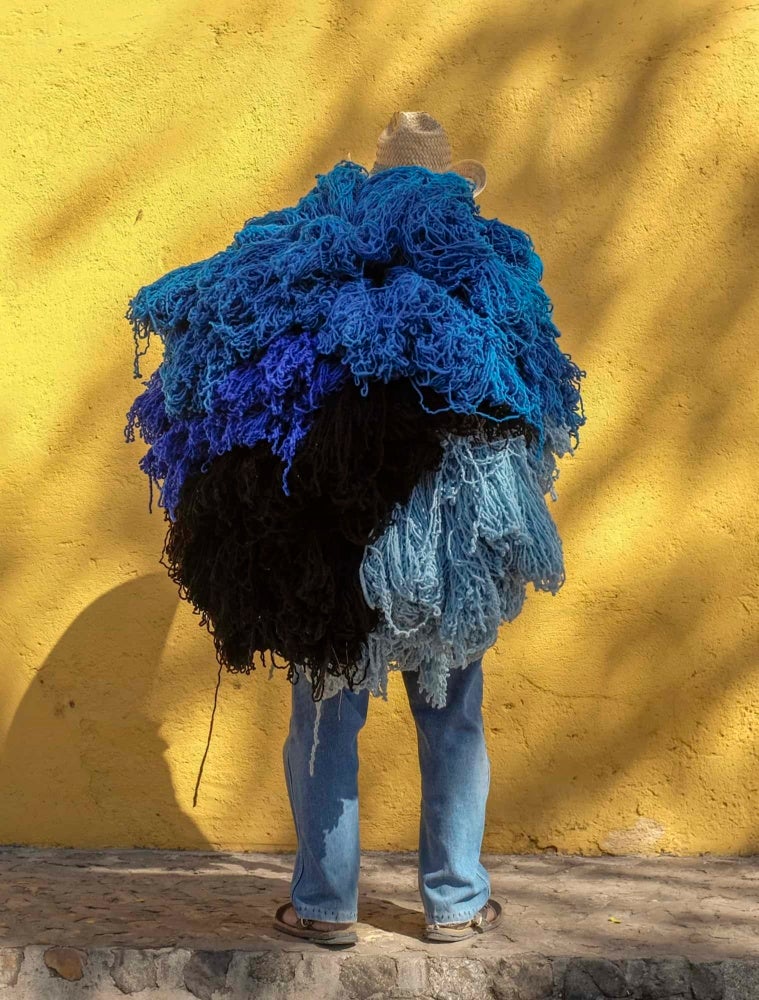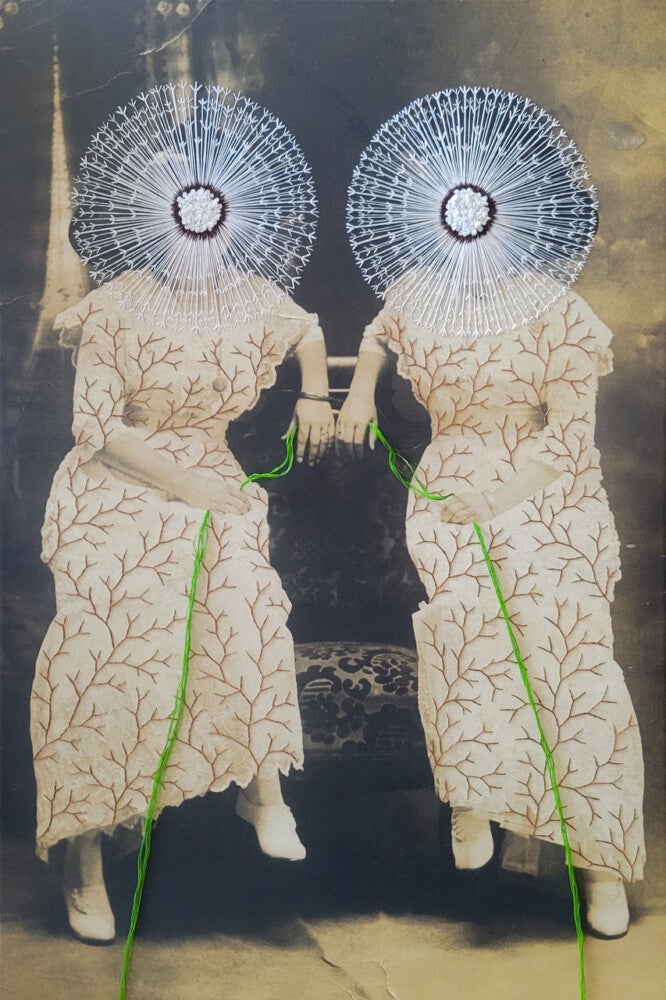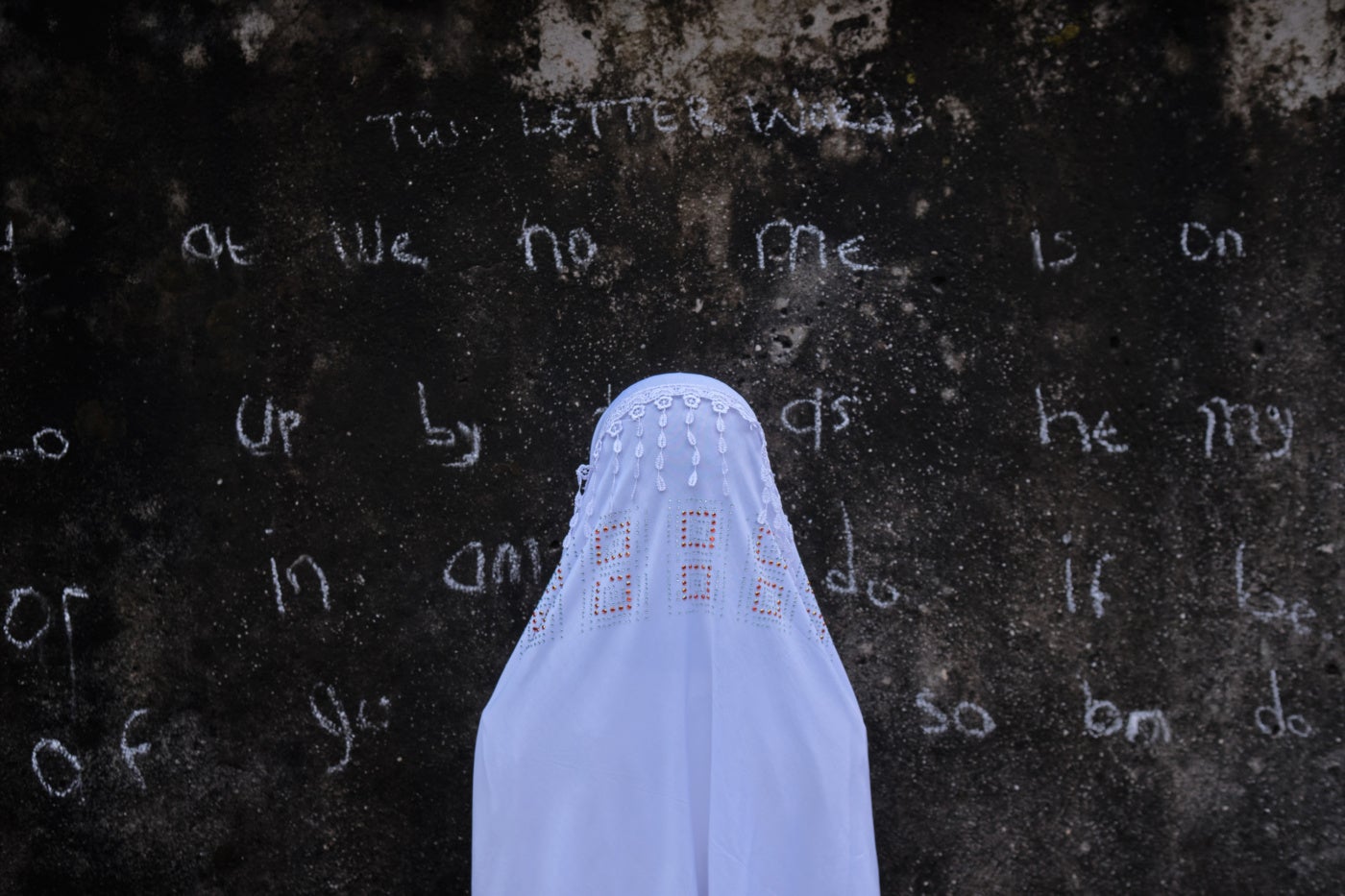
Critical Geography, FotoFest’s 2024 Biennial exhibition, takes its name from the sub-field of geography that analyzes the power dynamics inherent to the everyday use of space. Through this theme, FotoFest aims to challenge historical concepts of geography through photography and image-based practices. With a focus on the figurative, artists across three Houston spaces—the Serrano Gallery, the Anya Tish Gallery, and the Houston Center for Photography-–capture how histories of movement are mapped onto the body.
In the Serrano Gallery’s Reflections exhibition, amidst Wes Anderson-esque shots of tangerine storefronts by Carlos Ocando and haunting photographs of a historic, now-neglected Romanian spa by Bogdan Mihai, one finds Luvia Lazo’s portraits of elderly vendors at the Teotitlán de Valle market in Oaxaca, Mexico. The images are taken from Lazo’s series Kanitlow, through which she processes the loss of her beloved grandfather, Domingo. Kanitlow, or “I’m losing you” in Zapotec, is a phrase laden with double meaning, a disappearance that is as literal as it is metaphorical. It was what Domingo told Lazo when he began to lose his sight. Lazo’s images gather these many meanings of loss to address personal grief, indigeneity and placemaking, and intergenerational exchange. Following Domingo’s passing, Lazo began asking Teotitlán de Valle vendors about their grandchildren, sharing her own loss, and taking their portraits. In Maria (2024), Lazo’s faceless subject holds a posy of dahlias while standing in front of a carrot orange wall. Similarly, Hombre Azul (2024), features another faceless subject consumed by a multi-hued mass of blue yarn. Unlike traditional portraiture, the subject’s identity is concealed, and their personal narratives are withheld from the viewer.
Lazo’s photographs create a record while refusing to tell a story. Without the elders’ faces, the viewer relies on the pattern of their clothes, the texture of their hands, and the vibrancy of their items for sale. “I’m not convinced that it’s my place to exhibit those faces,” Lazo explained to New Yorker writer Ana Karina Zatarain.1 The obscured Kanitlow portraits lean into the potential of loss, blotting out identities to embed notions of labor, craft, and inheritance within the image. Viewers are forced to reflect and imagine narratives of their own. The series offers an intergenerational exchange between Lazo and her own culture, and invites the viewer to think of the cultural specificity of their own memories, ancestral migrations, and family roots.

Lazo’s troubling of corporal visibility and disclosure is similarly evoked in Anya Tish Gallery’s show Of Love, Pins, and Needles, and Emeke Obanor’s Childhood Interrupted at Houston Center for Photography (HCP). Within the group exhibition at Anya Tish, Texas-based artist Han Cao, Russian photographer Andrey Chezhin, and Italian American visual artist Marcella Colavecchio steady their lenses on the figurative to tell new narratives across the 20th century. Chezhin pays homage to titans like Man Ray and Robert Mapplethorpe, while Colavecchio evokes a smokey, sensual 1970s aesthetic through low-light Polaroids. In Cao’s doctored found photographs, she replaces the faces of her unknown subjects with sewn flowers, trees, and other botanical elements. These creative interventions re-write the narratives of these subjects, lifting them from obscurity. “I am always trying to change the story of the photo,” Cao told Colossal in 2023, “but this method allows me to transport the figure into a different world.”2

The decision of whether to reveal or not to reveal the subject in portraiture is typically a collaborative one. Through this interdisciplinary process, Cao’s relics of the past become non-sites, stripping them of history to create new possibilities and fantastical lives. In many ways, it’s the opposite of collaboration, wherein the subject is an active, conscious participant. What does it mean to use someone’s past as collage material? What does it mean to render a subject faceless, emptying the cultural context in which the original image was taken?
At HCP, Emeke Obanor’s exhibition Childhood Interrupted is comprised of two of the photographer’s bodies of work, HEROES and LEGAL RAPE. The former focuses on the 2014 abductions of 276 girls from their government school in Chibok, northeast Nigeria, by Boko Haram. The latter documents the lives and testimonies of Nigerian girls who have been sexually assaulted. Both series have a narrative quality, featuring lush color and sculptural shots. The gaze of the subject is either averted, as in Ladi, 16 Years old, born in North East Nigeria, (2020), or obscured, as in Aisha, 16 Years old, (2019). Though the photographic material is clear, there’s a refusal to be legible on the part of the subject, that is, to play the role of the victim. The testimonies that accompany each photograph not only give the subject a voice but also highlight the complicity of institutions—from schools to police to community—in violence against femme children.
Through the concealment of the body, artists across FotoFest’s participating spaces further amplify prescient global issues from gendered violence to the preservation of generational wisdom, revealing as they withhold.
Reflections is on view at Serrano Gallery through April 9, 2024.
Of Love, Pins, and Needles is on view at Anya Tish Gallery through April 20, 2024.
[1] Zatarain, Ana Karina. “The Power of Portraits With Hidden Faces,” The New Yorker, March 30, 2022, https://www.newyorker.com/culture/photo-booth/the-power-of-portraits-with-hidden-faces.
[2] Mothes, Kate. “Florals and Landscapes Redefine Vintage Portraits in Han Cao’s Embroidered ‘Silhouettes,’” Colossal, September 6, 2023, https://www.thisiscolossal.com/2023/09/han-cao-silhouettes/.




